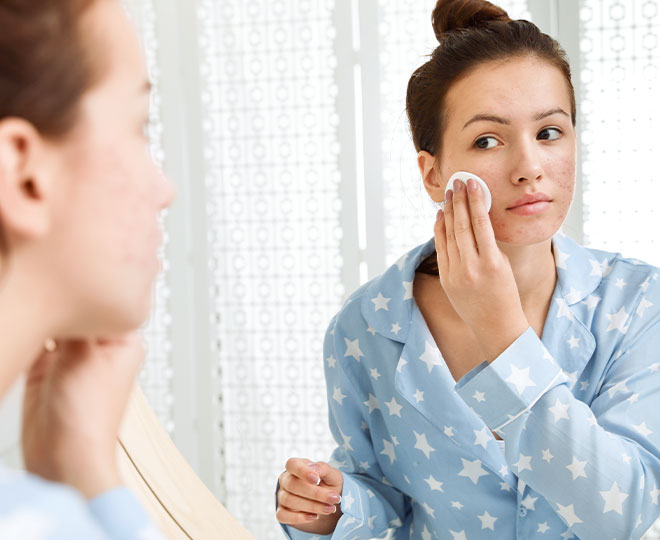While the pursuit for the best acne treatment products may lead you to foaming cleansers and spot treatments, chances are a face toner or two may have also popped up in your search.
If you found yourself wondering "What does toner do? What are face toner benefits? Are face toners actually worth my time and money?" then look no further. Ahead is a closer look into this popular skincare product, examining everything from potential face toner benefits to common toner ingredients to how to use these liquids in your daily routine.
What is face toner?
Toner is typically treated as an optional step of a skin care routine, but using a toner can be particularly beneficial to those with oily or acne-prone skin. Why? Face toners are formulated with exfoliating acids like alpha hydroxy acids (AHAs) and beta hydroxy acids (BHAs), plus botanical ingredients (more on these later!) that can remove excess oils while also replenishing and soothing your skin.
What does toner do?
Face toner benefits vary depending on the key ingredients that toner is formulated with. Most commonly, toners are formulated with exfoliating acids (think glycolic acid and salicylic acid) that are exceptional exfoliators, unclogging pores and removing extra oil and dead skin cells out of your skin. Other formulas nourish skin or help make pores look smaller.
Here are some of the most common ingredients you’ll find inside face toners — and what these ingredients can do for your skin:
- Witch hazel: Extracts from this astringent plant can have positive impacts on acne-prone or oily skin.
- Tea tree: Like witch hazel, tea tree is known as an astringent, which allows for the removal of excess oils and dead skin cells from the skin.
- Glycolic acid: Since this AHA is helpful in promoting exfoliation, a toner containing glycolic acid can be used for unclogging pores and improving skin tone and texture.
- Salicylic acid: Salicylic acid is a BHA, another category of exfoliating acid, and is commonly found in face toners. This ingredient boasts exfoliating properties, smooths skin texture and helps pores appear smaller.
- PHAs: Also known as polyhydroxy acids, PHAs are rich in antioxidants. PHAs also have the added benefit of providing additional humectant and moisturization properties to the skin.
- Lactic Acid: This milk-derived acid promotes exfoliation by breaking down the bonds of cells in the top layer of skin, revealing smoother skin as a result. This acid is also very moisturizing–it refreshes and soothes skin, without leaving it unbearably dry.
How do you use facial toner?
To use toner correctly, make sure you take off all your makeup and wash your face first. Apply a few drops or pumps of the toner to a cotton ball or pad and sweep it across your entire face, avoiding the sensitive eye area. Let the toner sink into your skin for a few seconds (it may tingle a bit!) — don’t wash it off! Now your skin is prepped and primed for any of the exfoliants, serums, and creams you plan on using next.
The bottom line
Now that we’ve covered the benefits of facial toners and reasons why you should use them, you’re probably looking for a good toner to incorporate into your skincare routine.
Proactiv has two star toners — learn more about them below.
Proactiv Revitalizing Toner, part of the Proactiv Solution skincare system, is an alcohol-free toner that includes glycolic acid and witch hazel. It removes excess oil and dead skin cells and softens and smooths skin.
Proactiv Re-Texturizing Toner marries glycolic and salicylic acid for impressive exfoliating power. This formula removes impurities from the skin, sloughs away dead skin cells, and minimizes the appearance of pores, while salicylic acid works to keep breakouts at bay.






